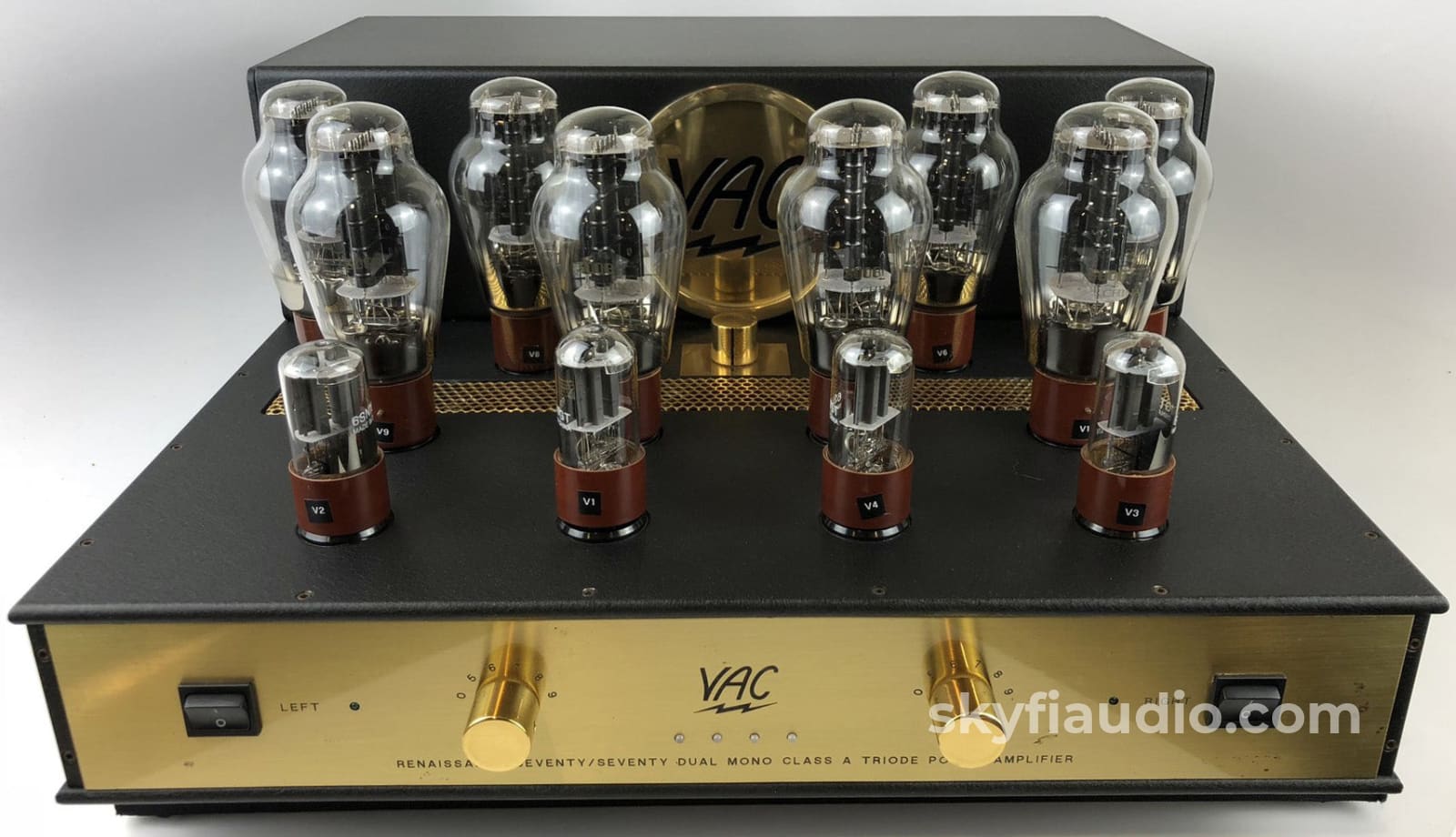
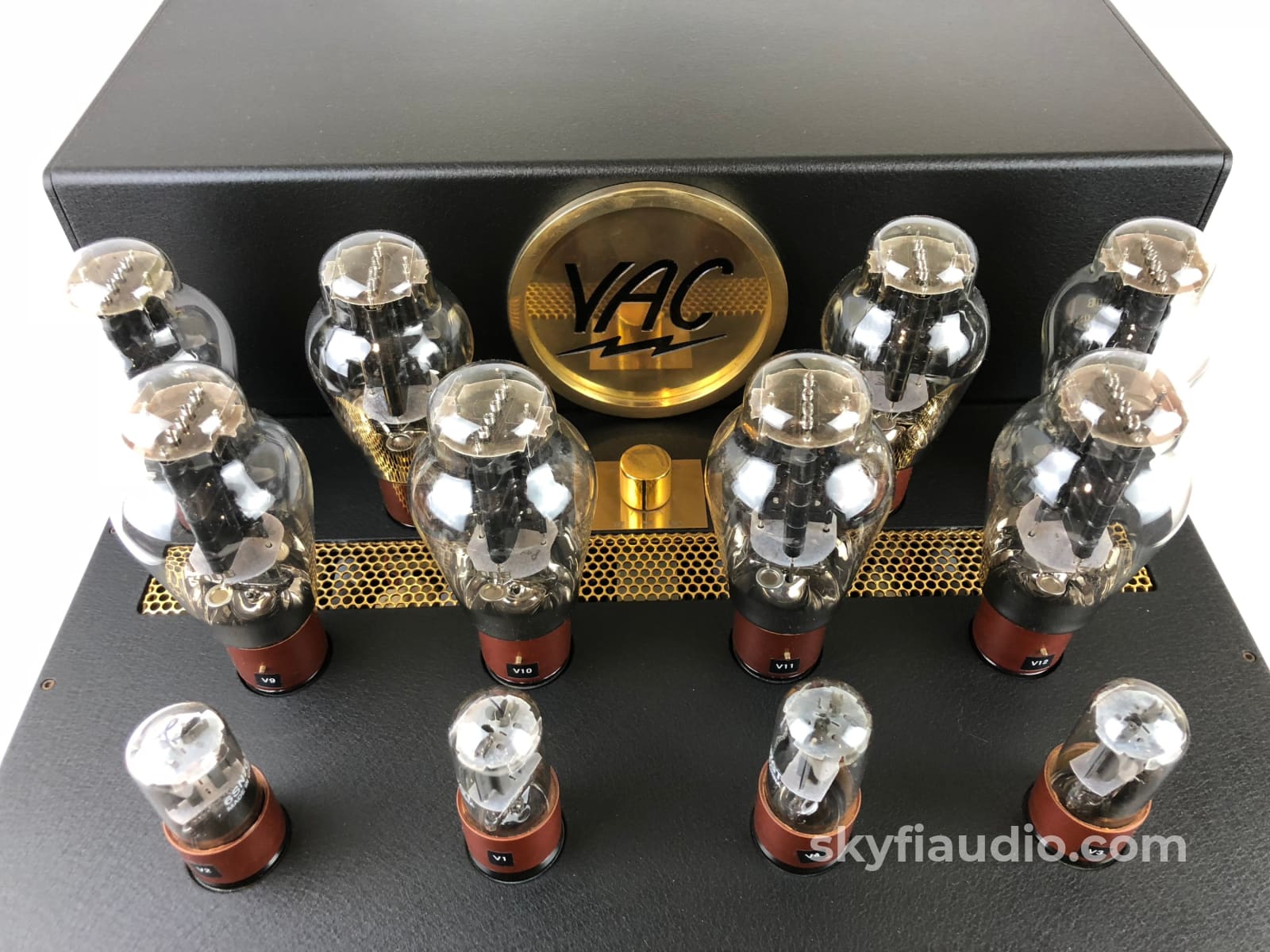
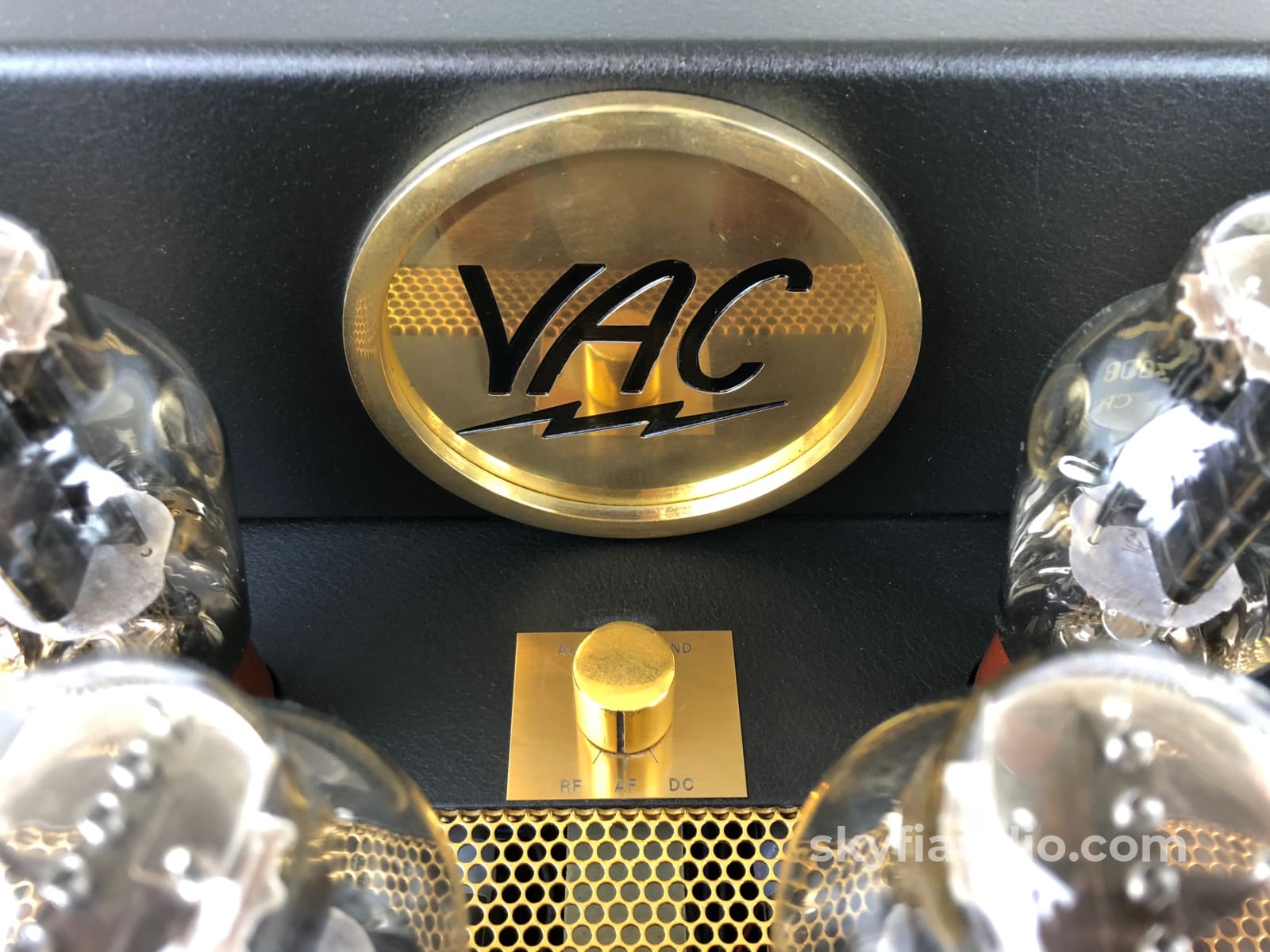
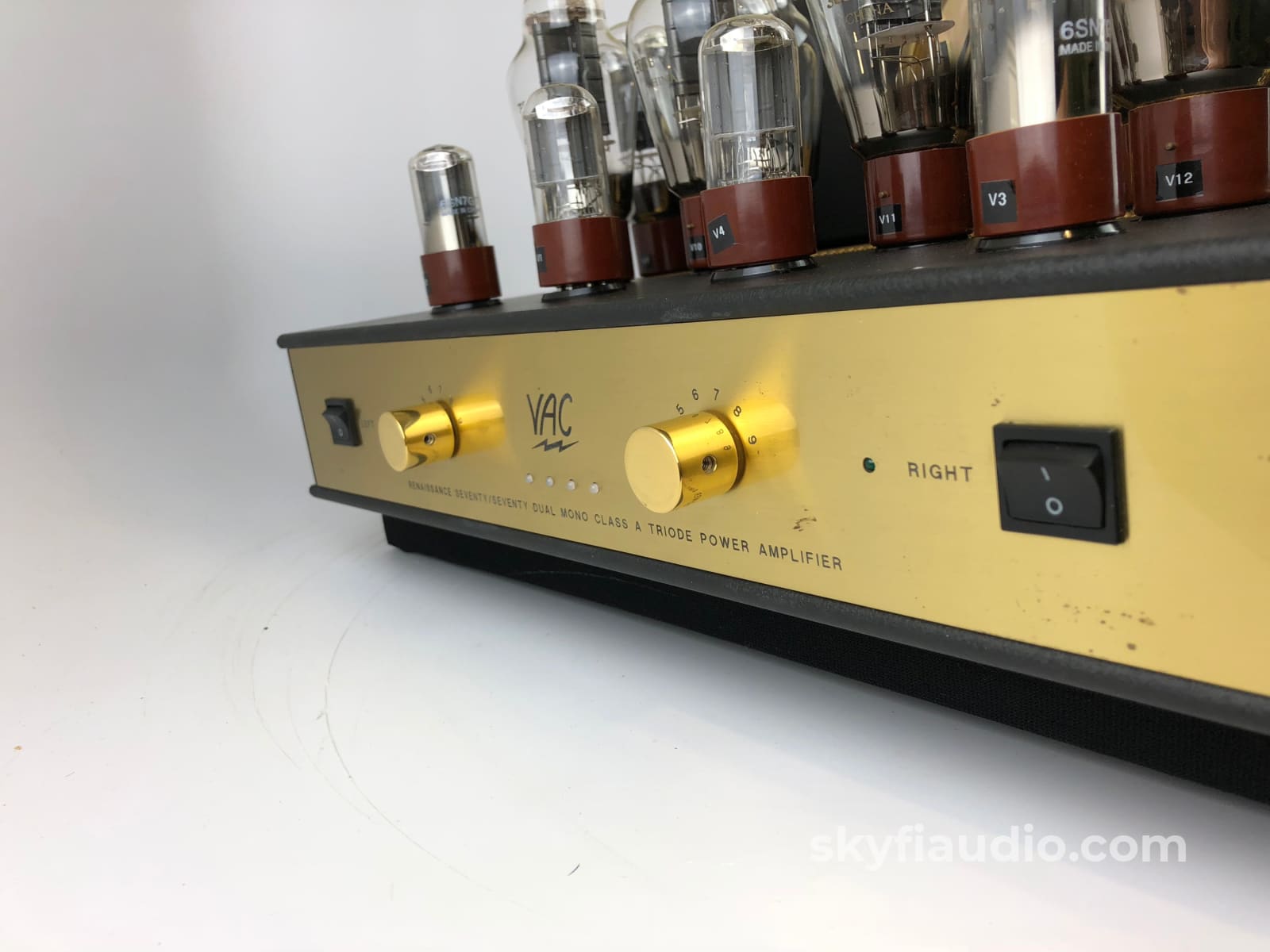
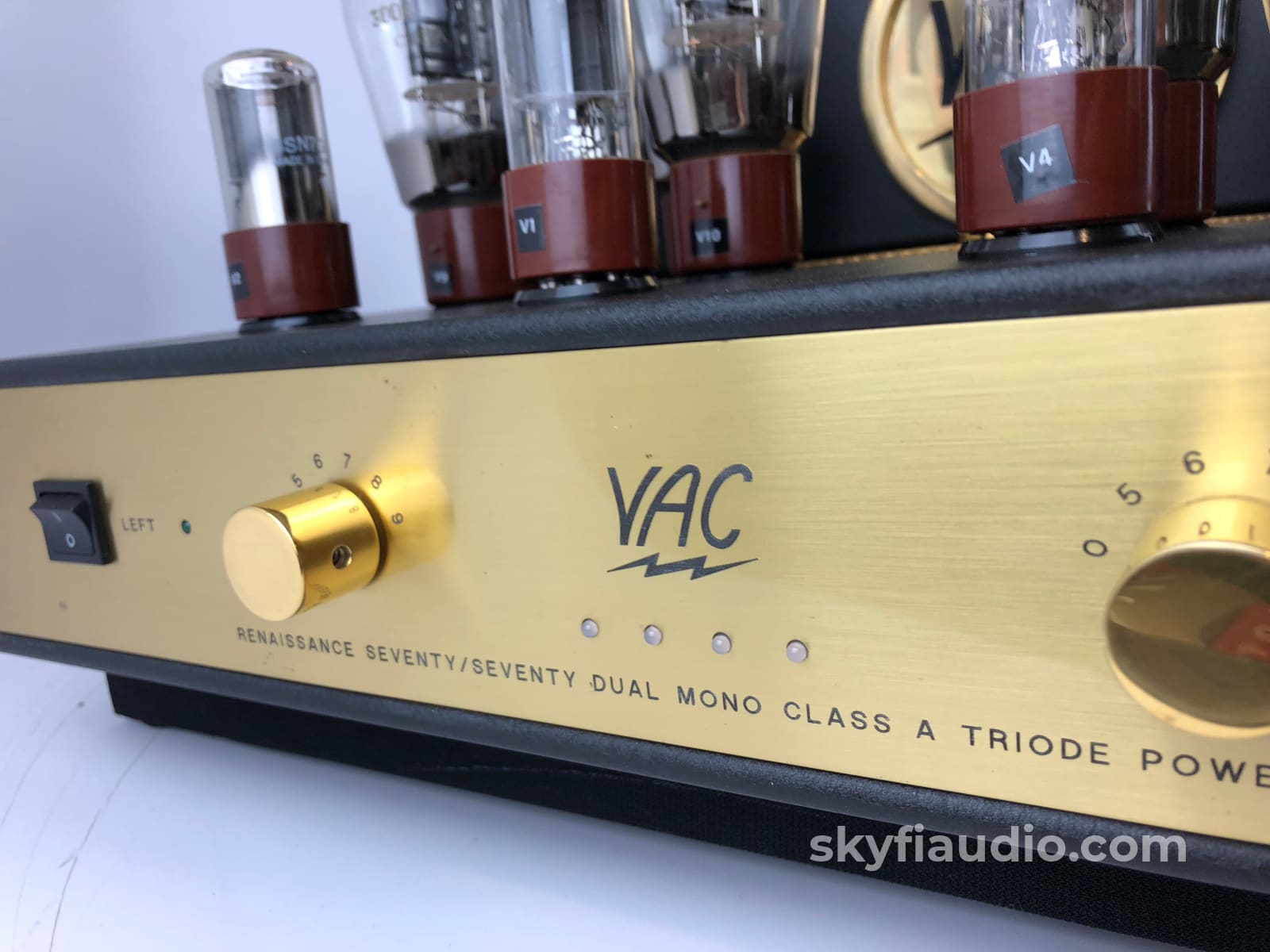
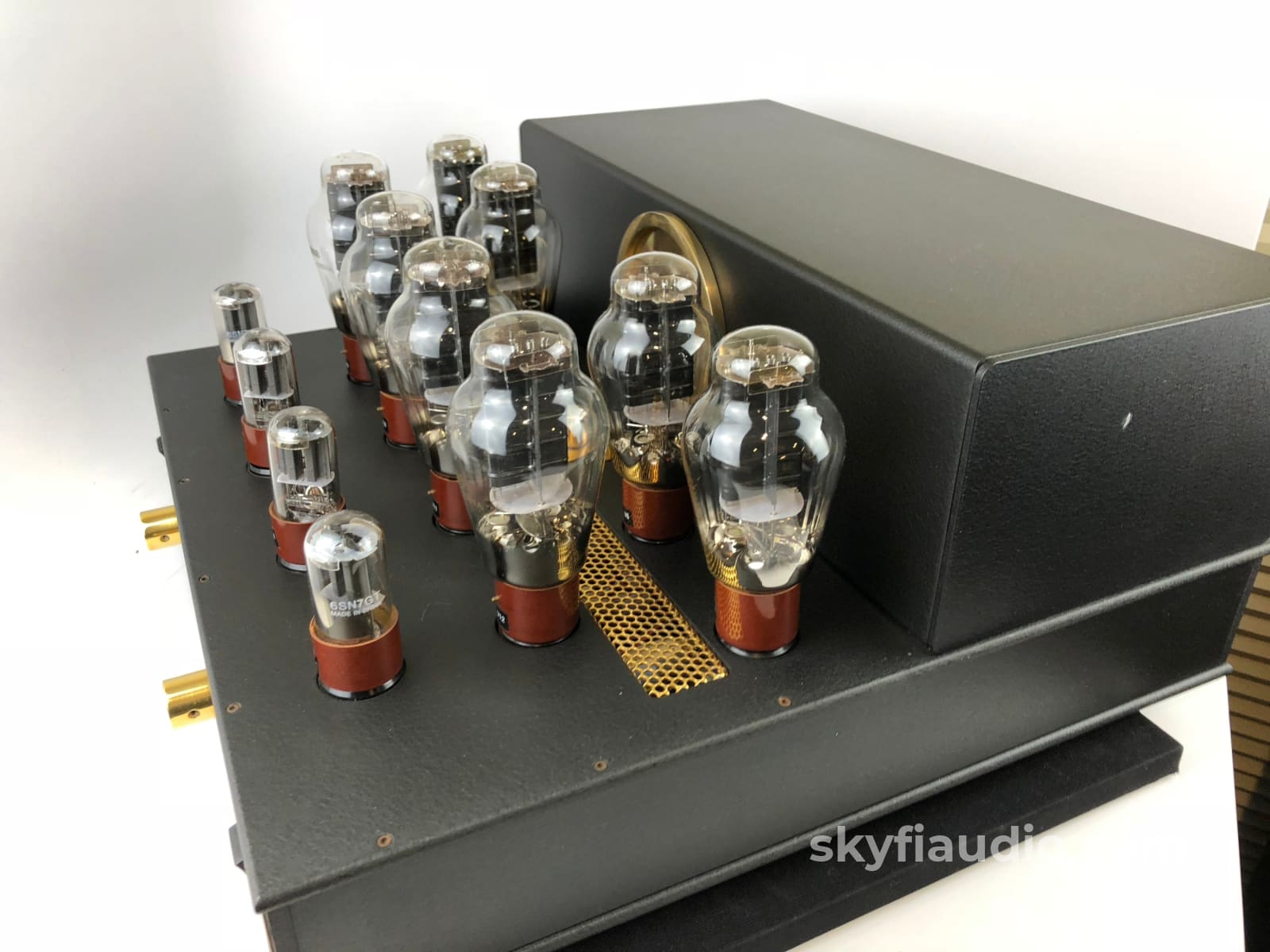
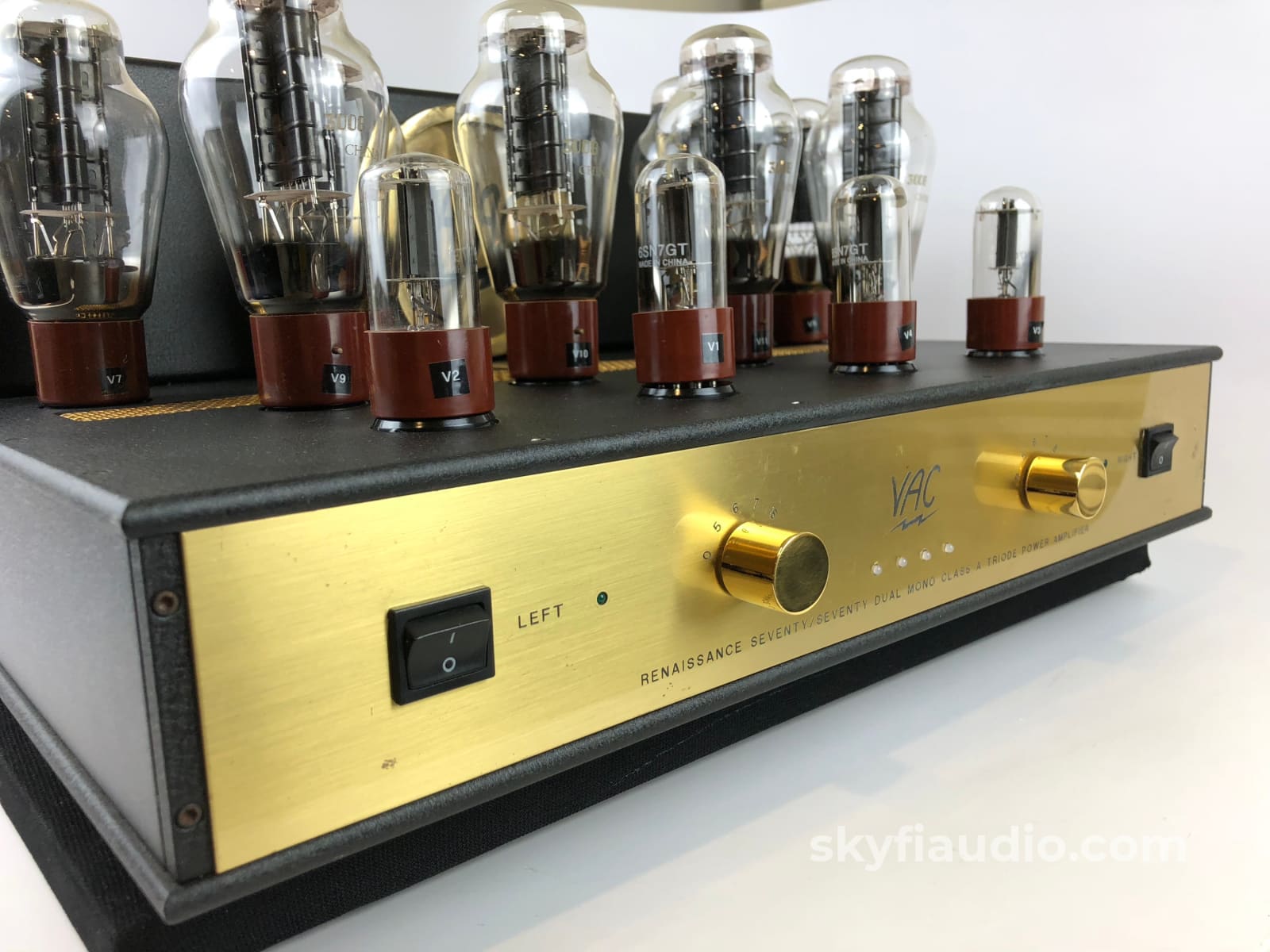
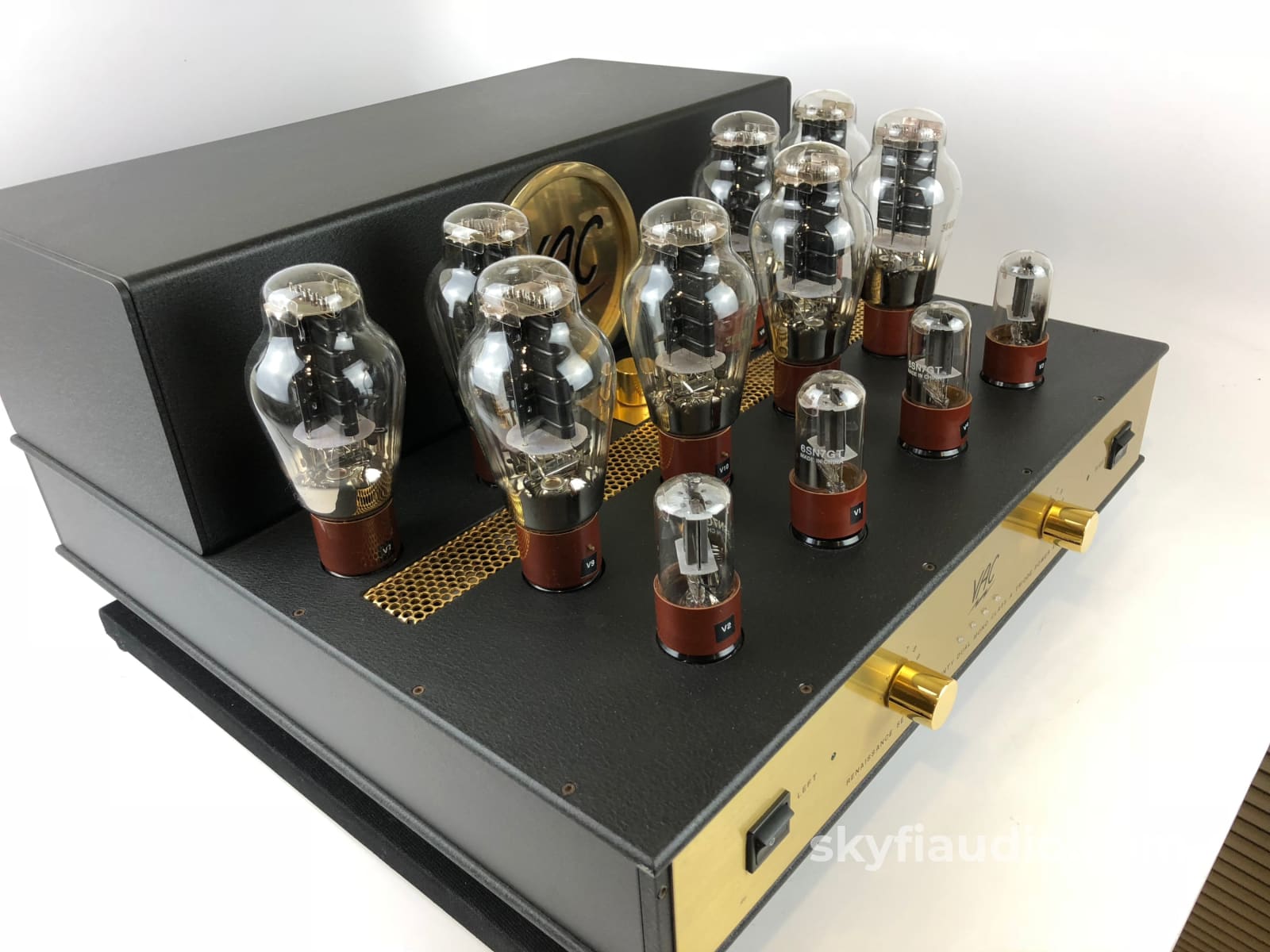
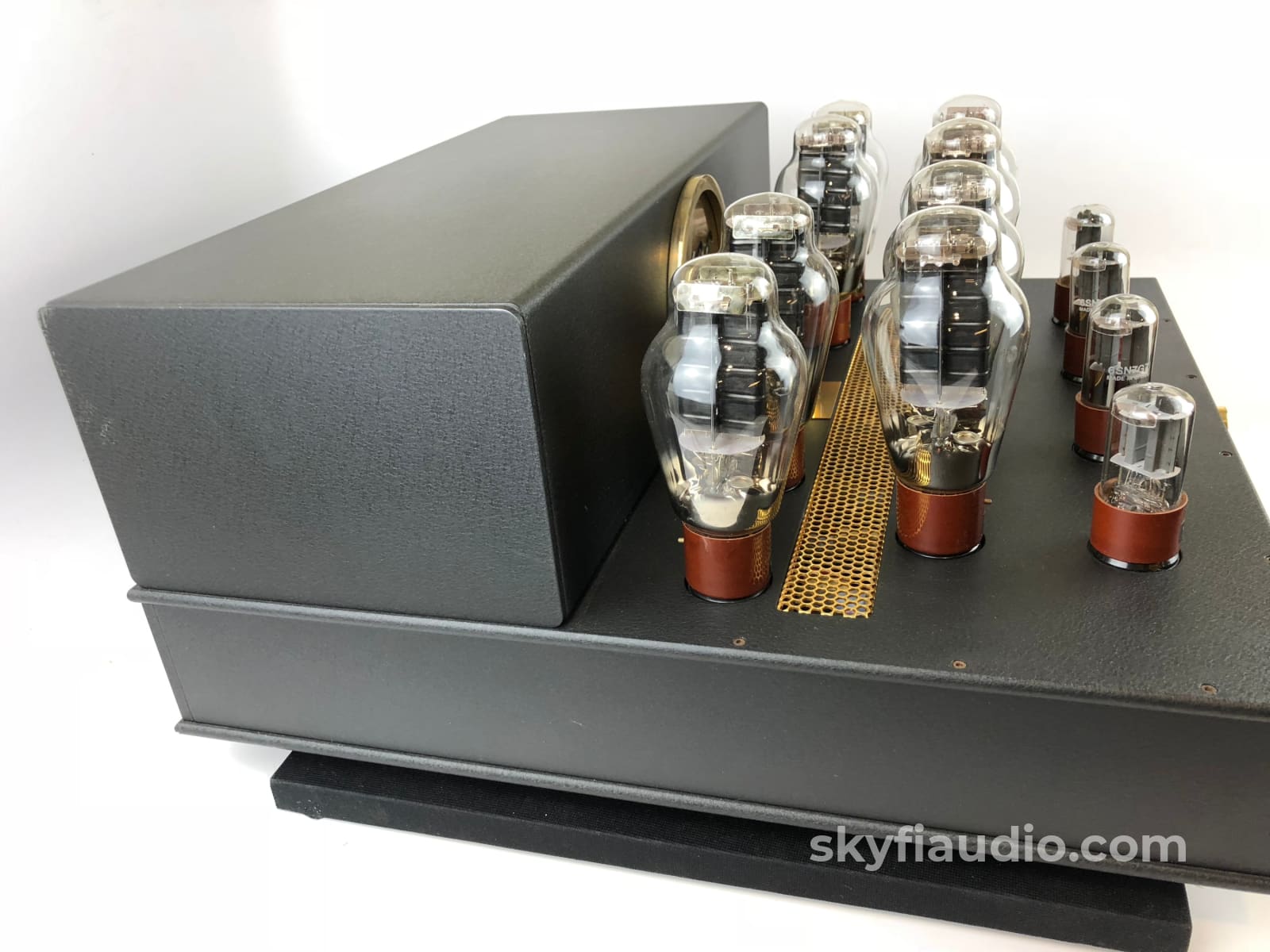
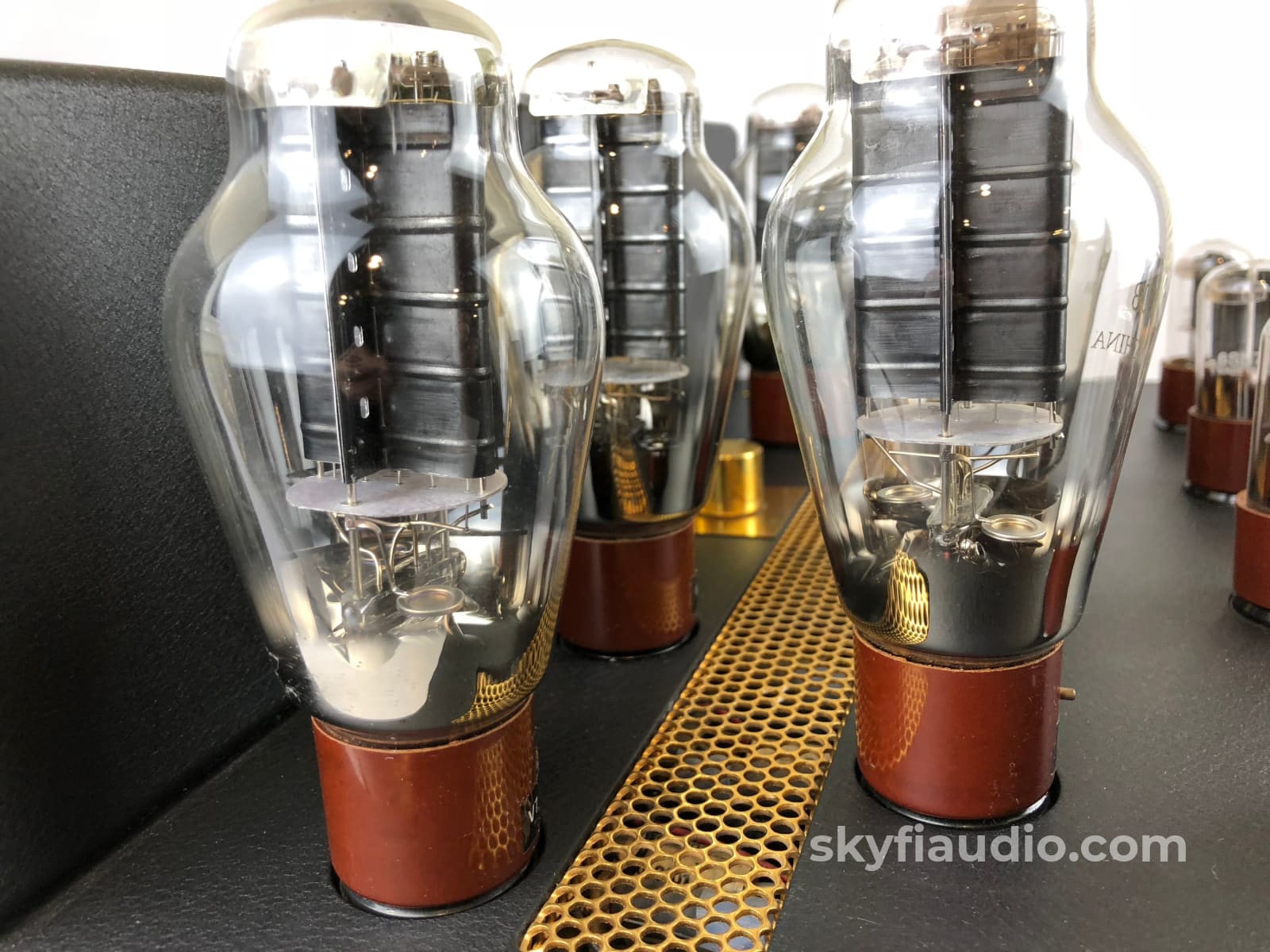
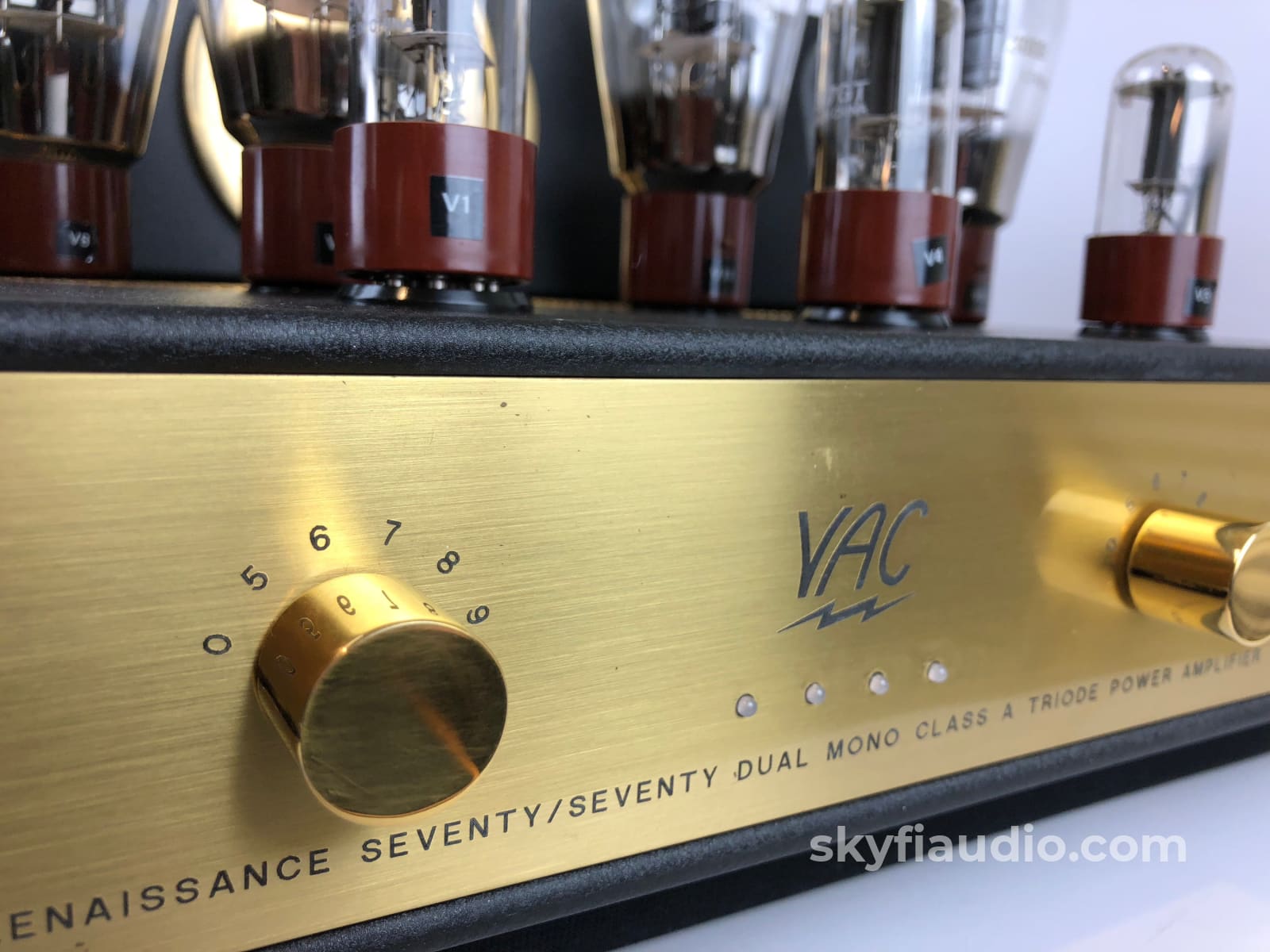
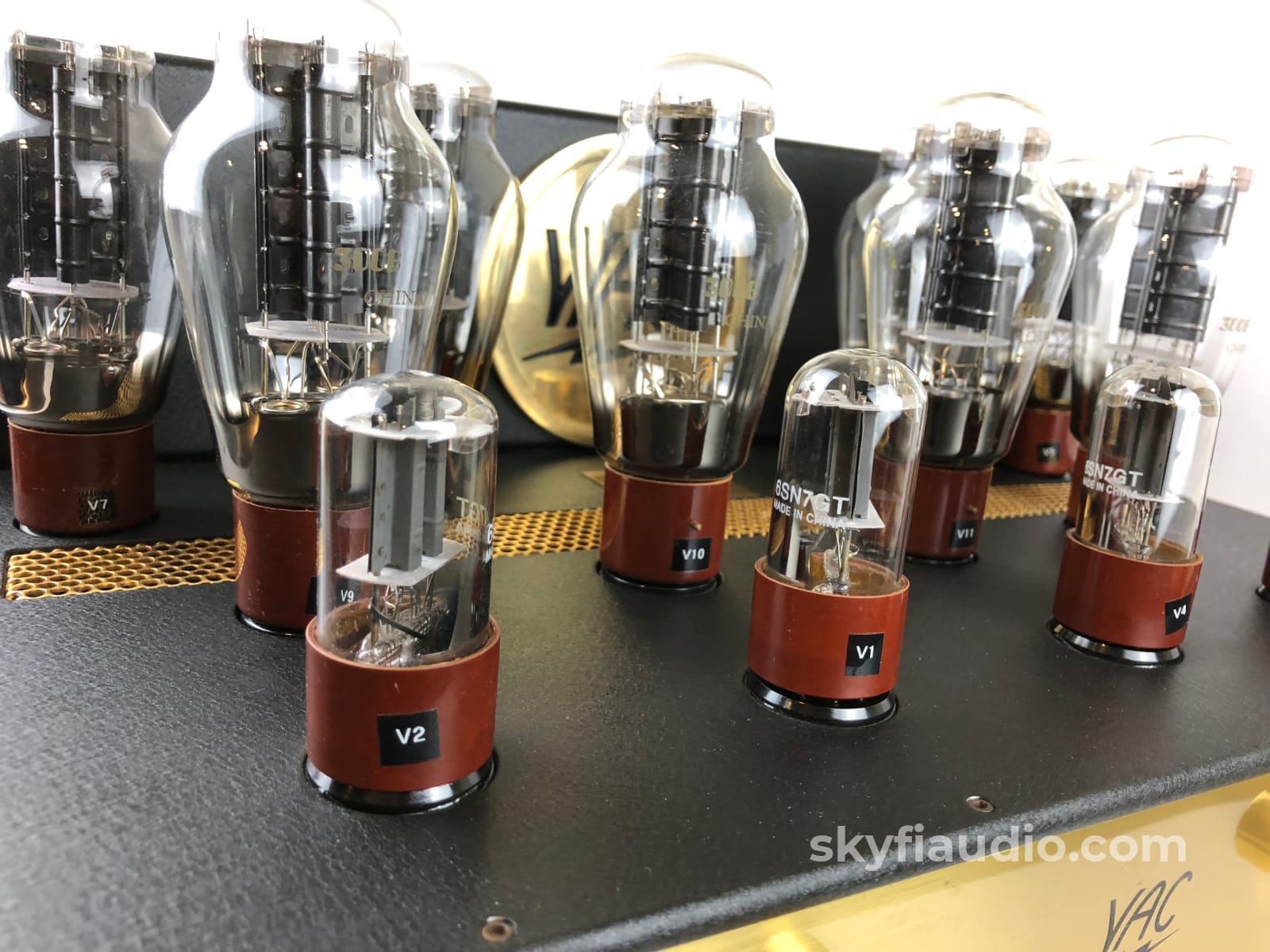
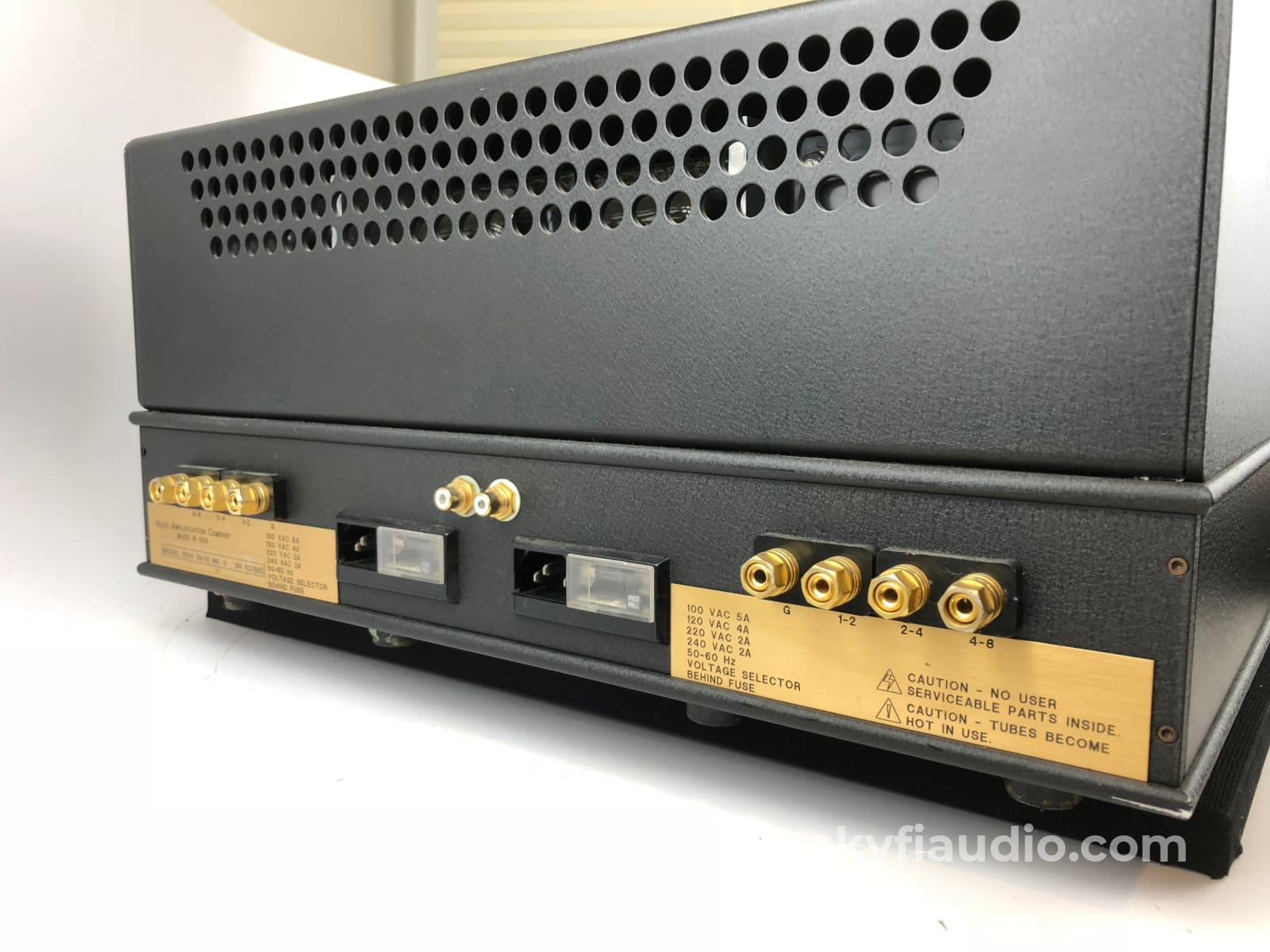

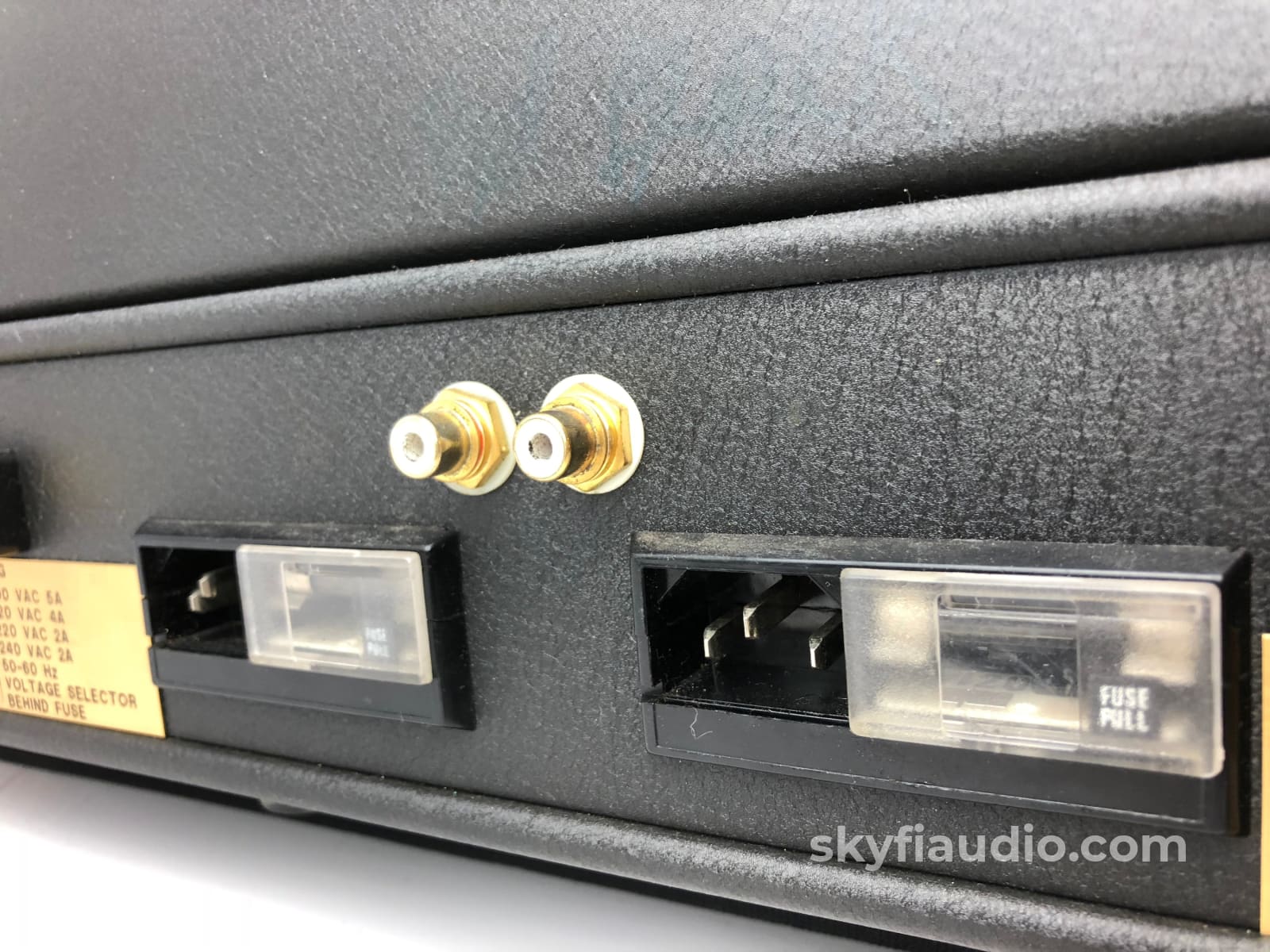
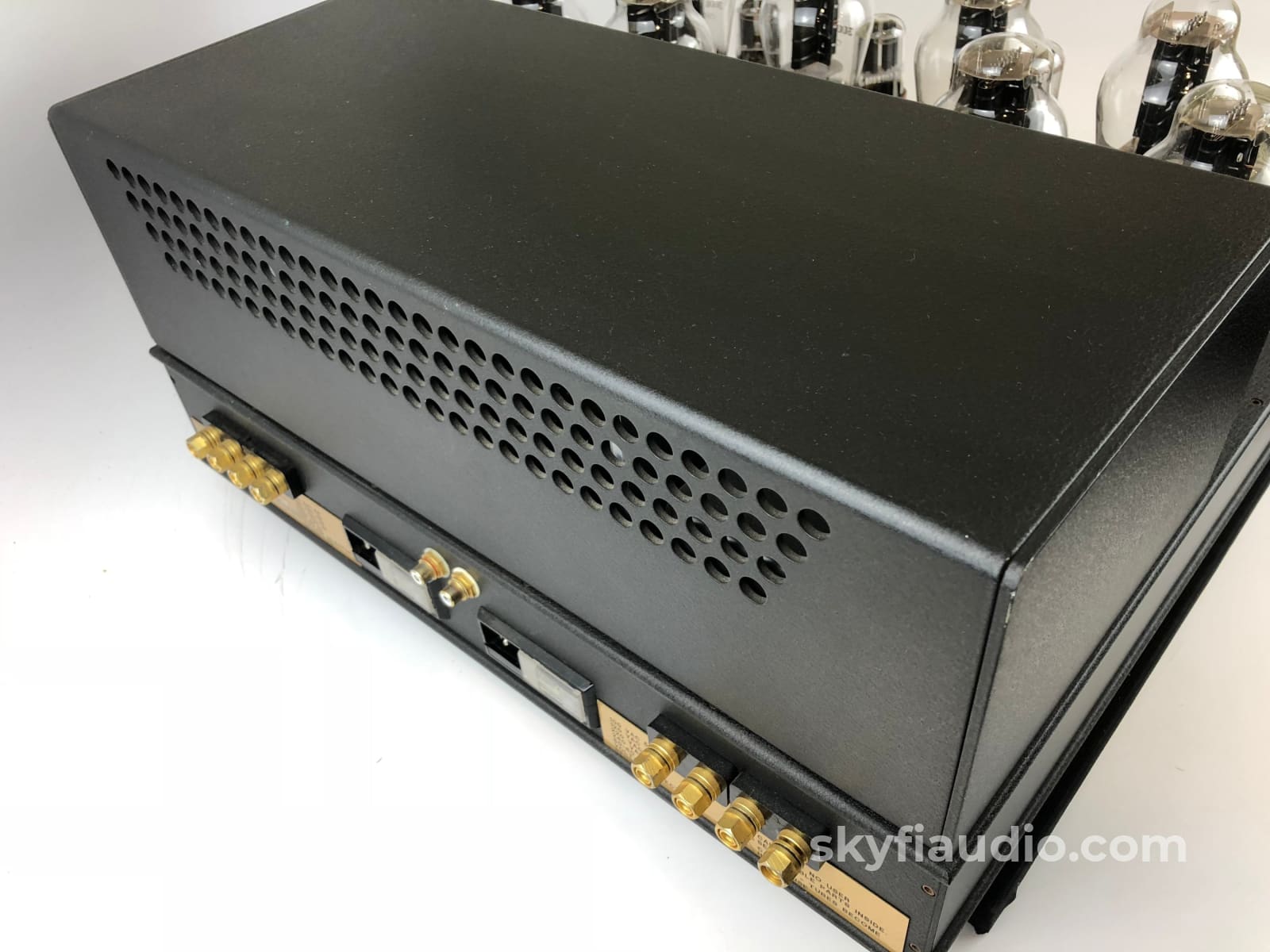
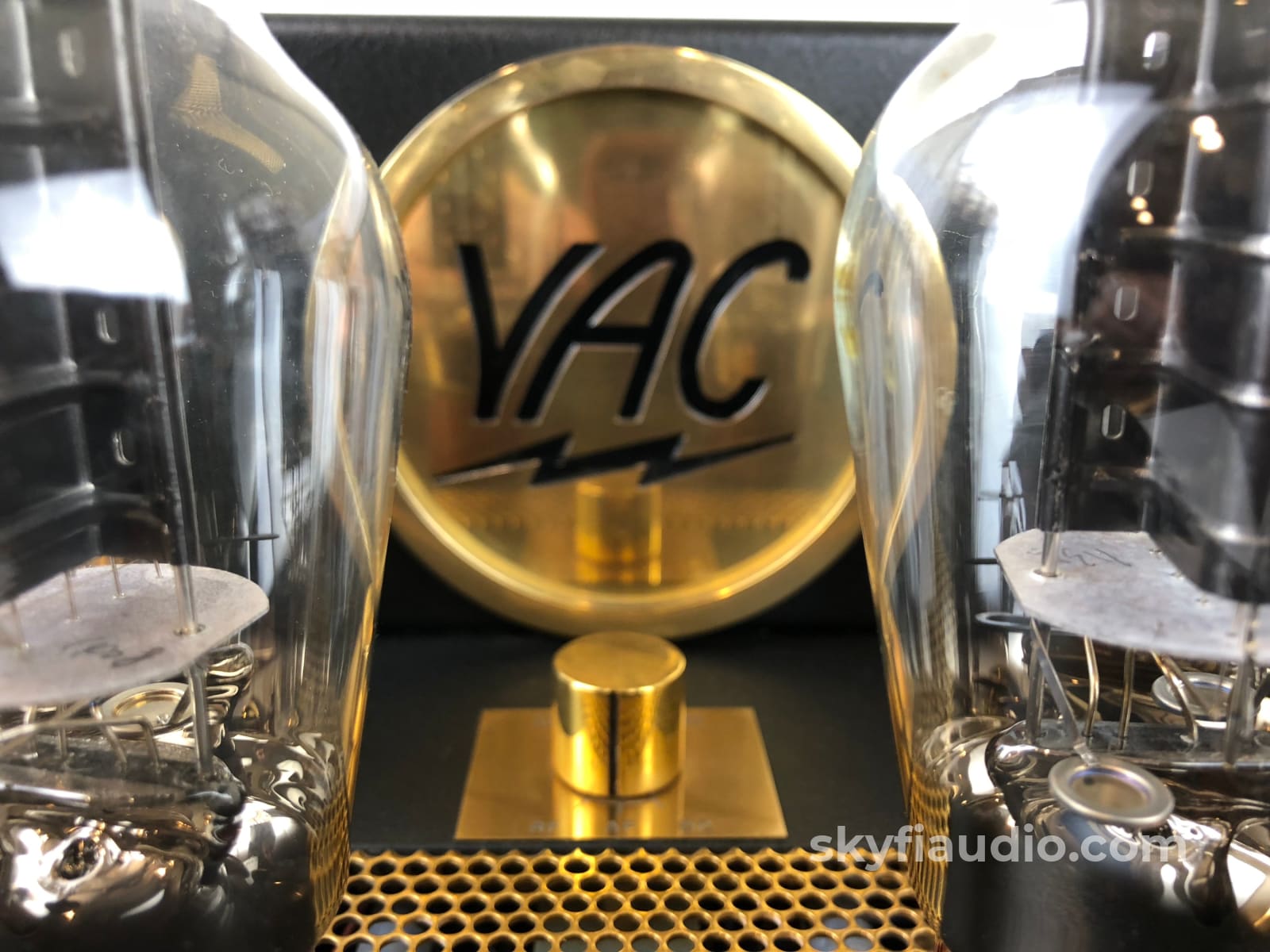
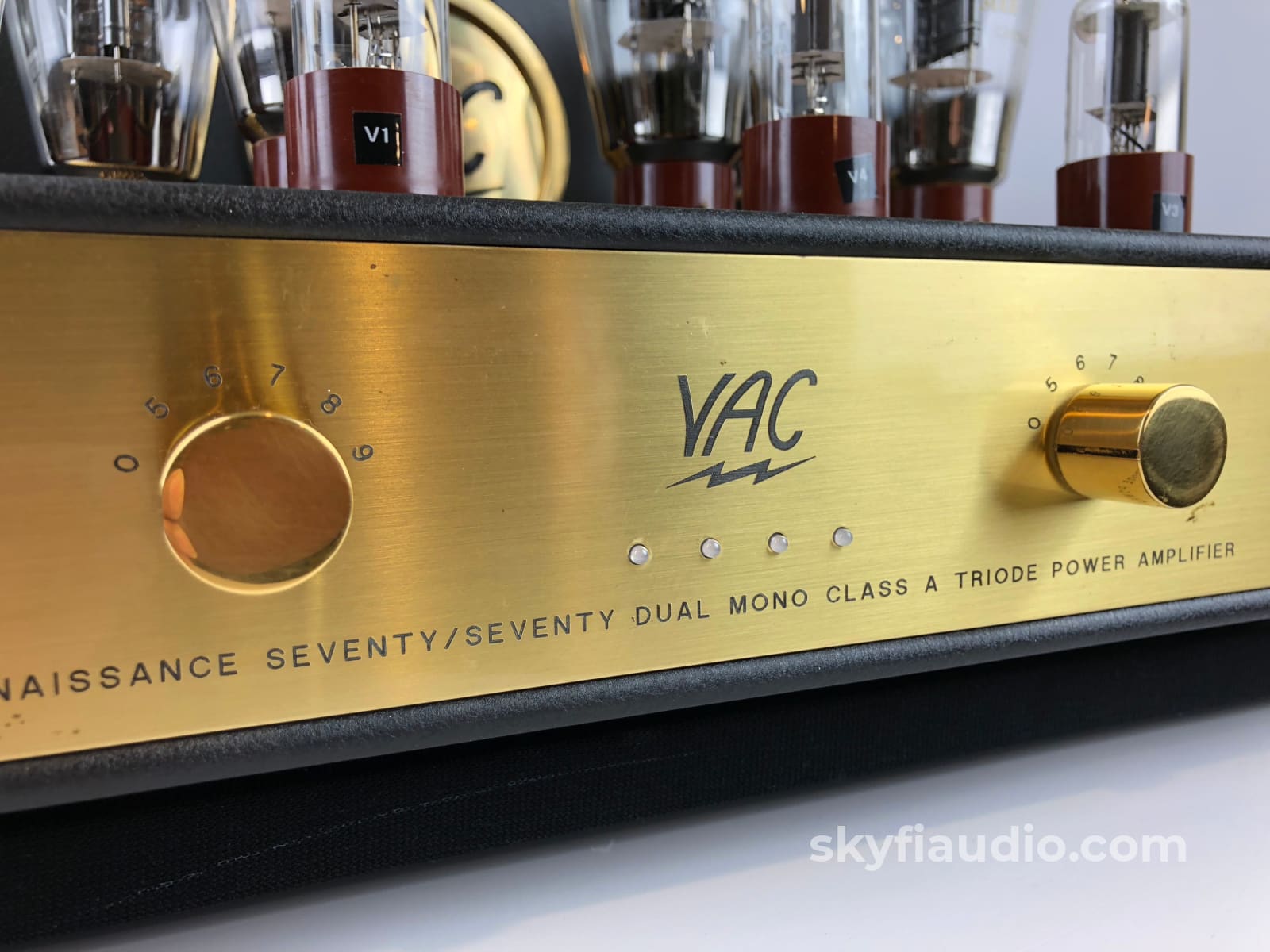
VAC (Valve Amplification Company) Renaissance Seventy/Seventy 70/70 Dual Mono Tube Amplifier
Free Shipping on Most Electronics - Excludes Speakers and Items Requiring Freight - Contiguous U.S. Only
Pickup currently unavailable at SkyFi 479

VAC (Valve Amplification Company) Renaissance Seventy/Seventy 70/70 Dual Mono Tube Amplifier
SkyFi 479
479 South Broad Street
Glen Rock NJ 07452
United States
This beautiful and unique "Dual Mono, Zero Feedback, All Triode" tube power amplifier comes with a set of brand new tubes, fully tested and working perfectly. A spare set of used tubes is also included.
Uses four x 300B tubes and two x 6SN7 tubes per channel. Rated at 65wpc.
Overall condition is very good with no deep scratches or dents. It does have two small tarnished imperfections on the faceplate, otherwise it's very very clean.
Please note this amp requires dual power outlets as this is a true dual mono amplifier.
INTRODUCTION:
The Renaissance Seventy/Seventy is a completely unique power amplifier. It allies purist amplifying devices with the power and solidity required to control modern audiophile loudspeakers.
The most noticeable feature of this amplifier is the 300B filamentary triode output tube. Originally designed by Western Electric in 1935 (Footnote 1), it has several extremely desirable features that have kept it in continuous production since that time. An examination of its dynamic curves (Figure 1) reveals it to be a naturally linear device, more so than triode connected pentodes or beam power tubes (ex: KT88, EL34), let alone any transistor device. It gives this superb performance with voltages on the order of 450 VDC, not the 1000-1500 VDC required by other output triodes like the 211 or 845. This lower voltage and lower output impedance allows superior output transformer design, control of the loudspeaker, and safety.
Each 300B tube has its own separate heater power supply and independent cathode self-bias network. This has several major advantages. No user adjustment of any kind is necessary to maintain proper balance of the amplifier. The stabilizing action of this technique upon the idle current (bias point) of each tube is exceptionally strong, and self corrects for large mismatches among tubes or drift with age. This circuit also results in real- world output capability much greater than the test-bench rating would indicate (Footnotes 2,3,4).
A total of four 300B are used in each channel to reach 70 watts per channel in Class A.
The input circuitry of the Renaissance Seventy/Seventy is derivative of the unique Williamson circuit, which provides pure, direct coupled, inherently balanced input amplification and phase splitting. Type 6SN7/5692 octal twin triodes do the honors.
The superb VAC output transformer provides superb voltage/current translation, allowing impedances from eight ohms to as low as one ohm to be driven.
The 35 pound chassis is machined from quarter inch thick aluminum plate. This strong, resonance-resistent structure houses two electrically independent channels of amplification. Each channel is separate, down to two dedicated shielded power cords. A total of eight transformers are used, providing sixteen power supplies.
The units is completely hand wired in three dimensional space for the shortest possible lead lengths, allowing passive components to perform much nearer to the theoretical ideal.
The Renaissance Seventy/Seventy is designed not to the latest fad but to substance, for the highest possible sound quality. Time spent familiarizing yourself with this manual will be well rewarded.
SPECIFICATIONS:
The VAC Renaissance Seventy/Seventy has been developed with the critical ear as the major arbiter of quality, with both conventional and unique measurements providing insight and guidance as necessary. The lack of emphasis on measurements is due to the fact that engineering's arsenal of equipment and techniques do not operate on the pattern recognition principals that control human perception of sound.
In the immortal words of Daniel von Recklinghausen, if it measures good and sounds bad it is bad. If it measures bad and sounds good you've measured the wrong things.
For those concerned with test bench performance, the following describes typical measured performance when operated with no feedback (0 dB) at 120 VAC, 60 Hz.
Power Output:
65 watts continuous average power at 1 kHz with less than 2% THD into 4 ohms connected to the 4-8 ohm tap
Distortion:
0.12 % THD at 10 watts
Frequency Response:
down 0.5 dB at 6 Hz and 90 kHz, ref 0 dB = 1 watt @ 1 kHz
down 3.0 dB at 2 Hz and 103 kHz, ref 0 dB = 1 watt @ 1 kHz
Power Bandwidth:
down 0.5 dB at 12 Hz and 58 kHz
down 3.0 dB at 8 Hz and 85 kHz
Negative Feedback:
Selectable: 0, 3.5, 4.5, 5.5, 6.5, 7.5 dB
Absolute Polarity:
Does not invert absolute phase
Our Testing Process for Amplifiers (Tube) at SkyFi Audio:
We start with a visual inspection of all internal components to make sure there are no signs of stress or aging. Capacitors are checked for telltale sings of bulging or leaking, resistors are checked for signs of overheating or cracking, and tubes are inspected for signs of stress overheating or cracking.
We then power up the unit carefully and run a simple 1k sine wave while monitoring the output on an oscilloscope for signs of distortion or noise. Finally we run the amplifier to its full rated power into the appropriate resistive load provided by our Sencore amplifier tester. If there is an issue, it will usually be noticeable at this point. If it all looks clean we will often test for THD (Total Harmonic Distortion) measured by our Keithley distortion meter, and compare it against the original manufacturers specifications. The amplifier the remains powered on to "burn in" on our test bench for a few hours to make sure there are no heat related issues. If there are balanced inputs available they will also be tested.
We also test all tubes for output gain and leakage on our calibrated B&K 747 tester against the original manufacturers specifications. If needed, the tubes will be replaced from our vast NOS (New Old Stock) vintage or modern inventory.
Final testing involves pushing actual music thorough the amplifier. We've learned over time that some issues are only noticeable to a trained ear while listening to familiar source material. Our test bench has reference vintage Kef speakers that we're very familiar with which quickly reveal any discrepancies. Some amplifiers will then move into our listening room where they are tested with our in-house reference speakers of choice.
Please click here for detailed specifics regarding our specialized packing process that separates us from the rest.
|
Item |
Included |
|
Original Box |
No |
|
Manual |
No |
|
Remote |
No |
|
Cables |
Yes |
|
Physical Condition |
8 |
|
Working Condition |
10 |
Choose options
